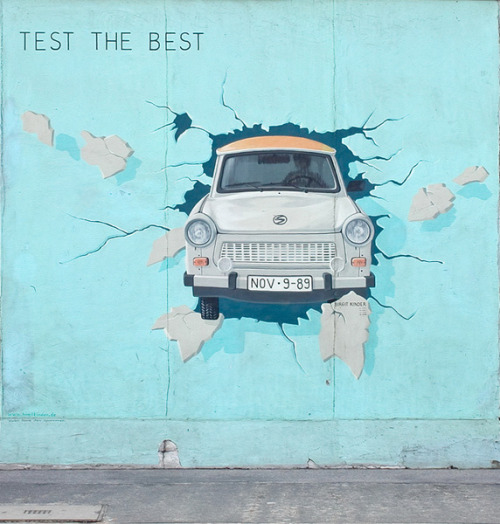peashooter85:East Germany’s Auto — The Trabant,Produced with little variation between 1957 until the
peashooter85:East Germany’s Auto — The Trabant,Produced with little variation between 1957 until the fall of the Soviet Union in 1991, the Trabant came to symbolize everything that was wrong with Communism, especially in the satellite state of East Germany. Manufactured by the VEB Sachsenring Automobilewercke in Zwickau, Saxony, the Trabant was the most commonly driven car in East Germany. While advertised as being a economical family vehicle, the Trabant gained a reputation for being a reflection of East Germany’s stagnant economy and technological status.The heart of the Trabant was of course its engine, an 18 horsepower two cyldiner two stroke engine, which was considered quaint and obsolete for automobile design even in the 1950’s. For lubrication, two stroke engines typically need gasoline which is mixed with oil since they lack an oil injection system. As a result, the Trabant motored down the street with a thick black plume of exhaust trailing from its tailpipe. Later models were upgraded with a 26 horsepower engine. The Trabant was a no frills, Spartan automobile, lacking common luxuries such as air conditioning, radio, and interior lights. They even lacked a gas tank gauge, a truly frivolous capitalist pig-dog device when any good communist could make due with a large stick placed into the tank to determine how much gas is left. By the way, the gas tank lacked a fuel system to the engine, so it was placed directly above the engine so that gravity could drip fuel into the engine’s two cylinders. The Trabant did have a heater, but it was designed more in mind for blowing off heat from an overheating engine, and less in mind for comfort. Perhaps the most interesting feature of the Trabant was that it’s body was not made of metal. First a metal body would be too heavy for its 18 horsepower engine. In addition, East Germany suffered chronic steel shortages throughout its history. Instead the body was made out of a special hardened plastic material called duraplast, which was produced from cotton waste from Russia, sawdust, and a special resin waste that resulted from East Germany’s dye industry. With a front mounted gas tank placed over the engine, and a body made of resin coated plastic, the Trabant posed a serious fire hazard in the case of car crashes and other accidents.Despite its flaws, the Trabant actually has a positive legacy among those who look back into the past. When the Berlin Wall fell in 1989, the world watched as thousands of East Germans crossed the border searching for freedom in their Trabants. After the reunification of Germany the Trabant continued in production for a few years, but ultimately was buried by more advanced designs from BMW, Mercedes, and Volkswagen. Production was attempted in other countries, such as Uzbekistan, but all ultimately failed. Today the Trabant is a popular vehicle among classic car collectors. -- source link
Tumblr Blog : peashooter85.tumblr.com



